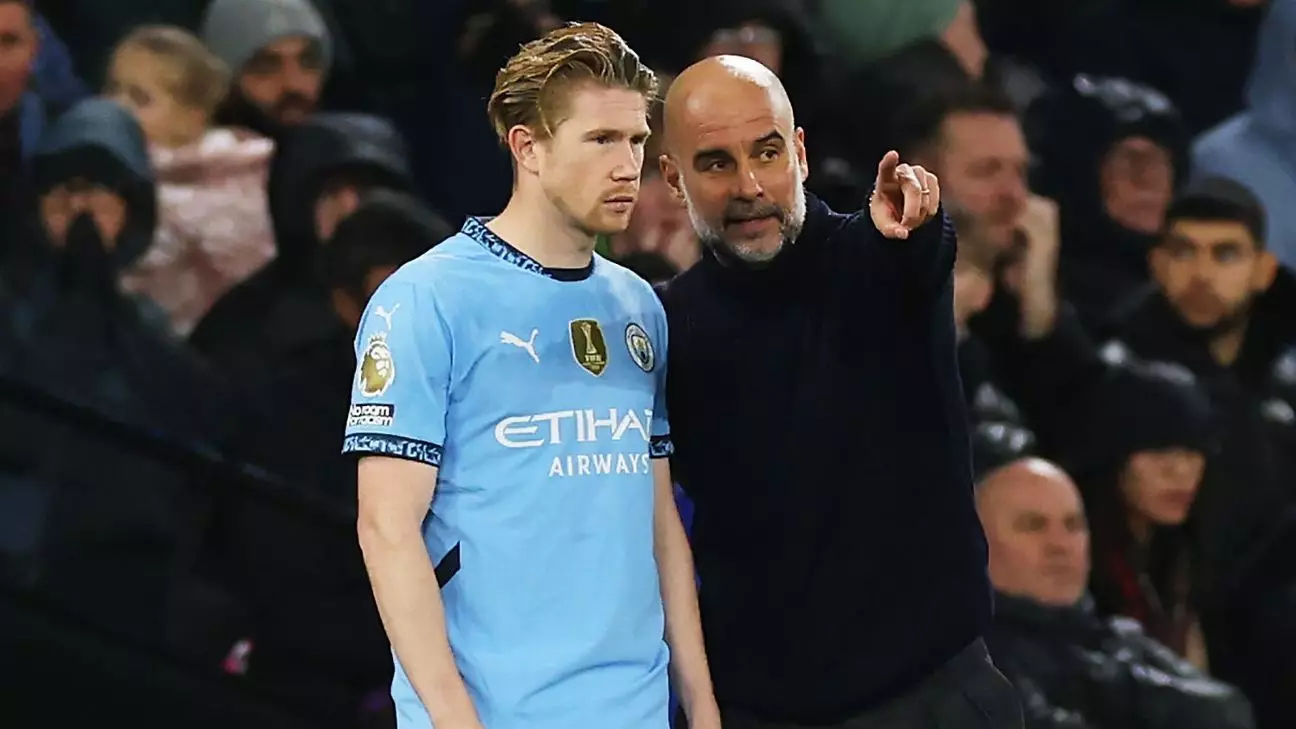In the world of football, team dynamics and relationships between players and coaches can significantly impact a club’s performance. Recently, Manchester City manager Pep Guardiola faced scrutiny regarding his treatment of midfielder Kevin De Bruyne, who has struggled to regain his form after a prolonged injury layoff. Despite loud speculations and commentary from pundits, Guardiola firmly denies any rift with the talented Belgian. Analyzing this contentious discussion provides insights into the complexities of managing high-profile athletes, especially in the cutthroat arena of professional football.
Kevin De Bruyne’s absence from Manchester City’s starting lineup stems from a significant abdominal injury he suffered during a match against Inter Milan in September. Since his return, De Bruyne has only come off the bench for five matches, raising eyebrows and igniting discussions about his fit in the squad. The frustration surrounding his limited playtime was magnified during City’s recent loss to Liverpool, where Guardiola made the decision to substitute De Bruyne in only after the team trailed by two goals. Underperformance and a lack of coordination have been a recurring theme for City, leading pundits like Gary Neville and Jamie Carragher to suggest that a deeper issue might be at play.
Guardiola’s choice not to field De Bruyne more prominently during these matches has led to increasing scrutiny. Observers began to question whether this was merely a strategic decision or the manifestation of a personal conflict between the coach and one of his star players. The sensitive nature of injuries and the pressure to perform can create a breeding ground for such theories, particularly in high-stakes environments like the Premier League.
The opinions of Gary Neville and Jamie Carragher offer an interesting lens through which to evaluate this scenario. Their descriptions of the situation as “unusual” and “bizarre” imply a belief that a rift must exist due to De Bruyne’s continued lack of starting appearances. This perspective can easily resonate with fans and the media, feeding into a narrative that seeks explanations for on-field decisions made by the coaching staff. However, from a managerial viewpoint, it is crucial to evaluate a player’s physical readiness as well as their performance metrics, particularly after a long injury spell.
Guardiola addressed those rumors directly, emphasizing his deep appreciation for De Bruyne’s contributions, stating unequivocally that he enjoys coaching him and recognizes the vast talent De Bruyne brings to the team. However, he explained that given the midfielder’s age and recent injuries, he requires time to fully acclimatize back into competitive football. This statement highlights an essential tension in sports management: balancing player welfare with the club’s need for performance.
While Guardiola hopes to reintegrate De Bruyne as soon as possible, he reiterated that bringing him back into the squad will not automatically solve all of Manchester City’s problems. He correctly asserts that a player’s effectiveness relies on their physical and mental condition, particularly after significant injuries. De Bruyne, now at the age of 33, faces a tough climb back to his prime form, which Guardiola indicates he is aware of and empathetic toward.
Guardiola’s acknowledgment that De Bruyne is not the player he once was reinforces an important aspect of professional sports: evolution. Players change over time due to aging, injuries, and individual development paths. As much as City yearns for the creative flair that the Belgian offers, success in football comes from collective effort rather than reliance on singular talent. Guardiola underscores that even with a player as gifted as De Bruyne, the team operates on a foundation of unity and shared responsibility, where attacking and defending are integral parts of every player’s role.
As Manchester City navigates their current struggles, the relationship between Pep Guardiola and Kevin De Bruyne will remain critical to their success. While challenging circumstances, including injuries and form, create conditions ripe for speculation, it is essential to approach such situations with a nuanced perspective.
In sports, misunderstandings can cloud public perception, yet they often overlook the broader landscape of management, player health, and teamwork. If both Guardiola and De Bruyne can openly communicate and work collaboratively, there is potential for a reinvigorated partnership that could lead Manchester City back to form. Ultimately, the true test lies ahead, not just in their next match but throughout the season as both strive to conjure the magic that has historically defined their tenure together.
